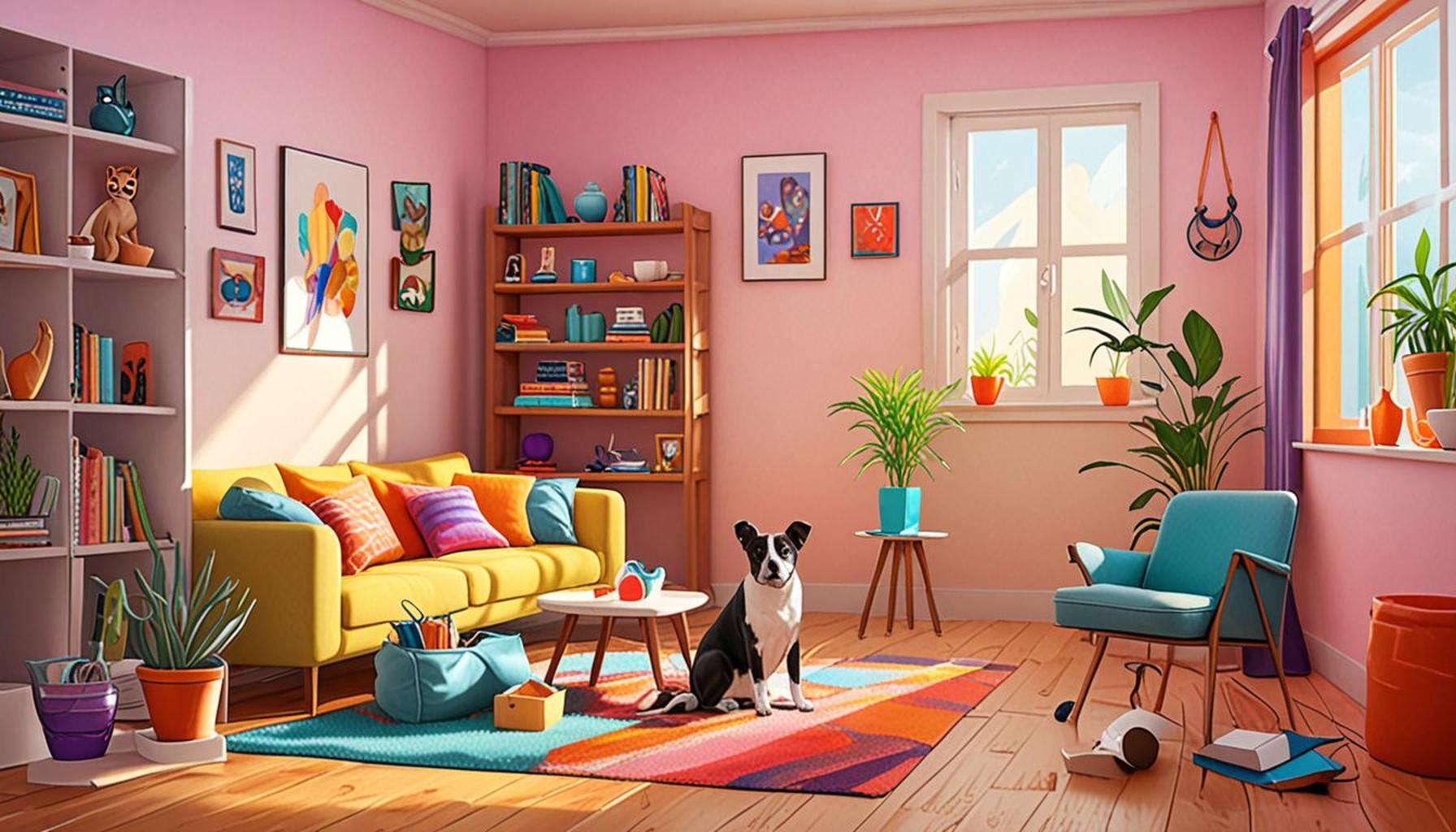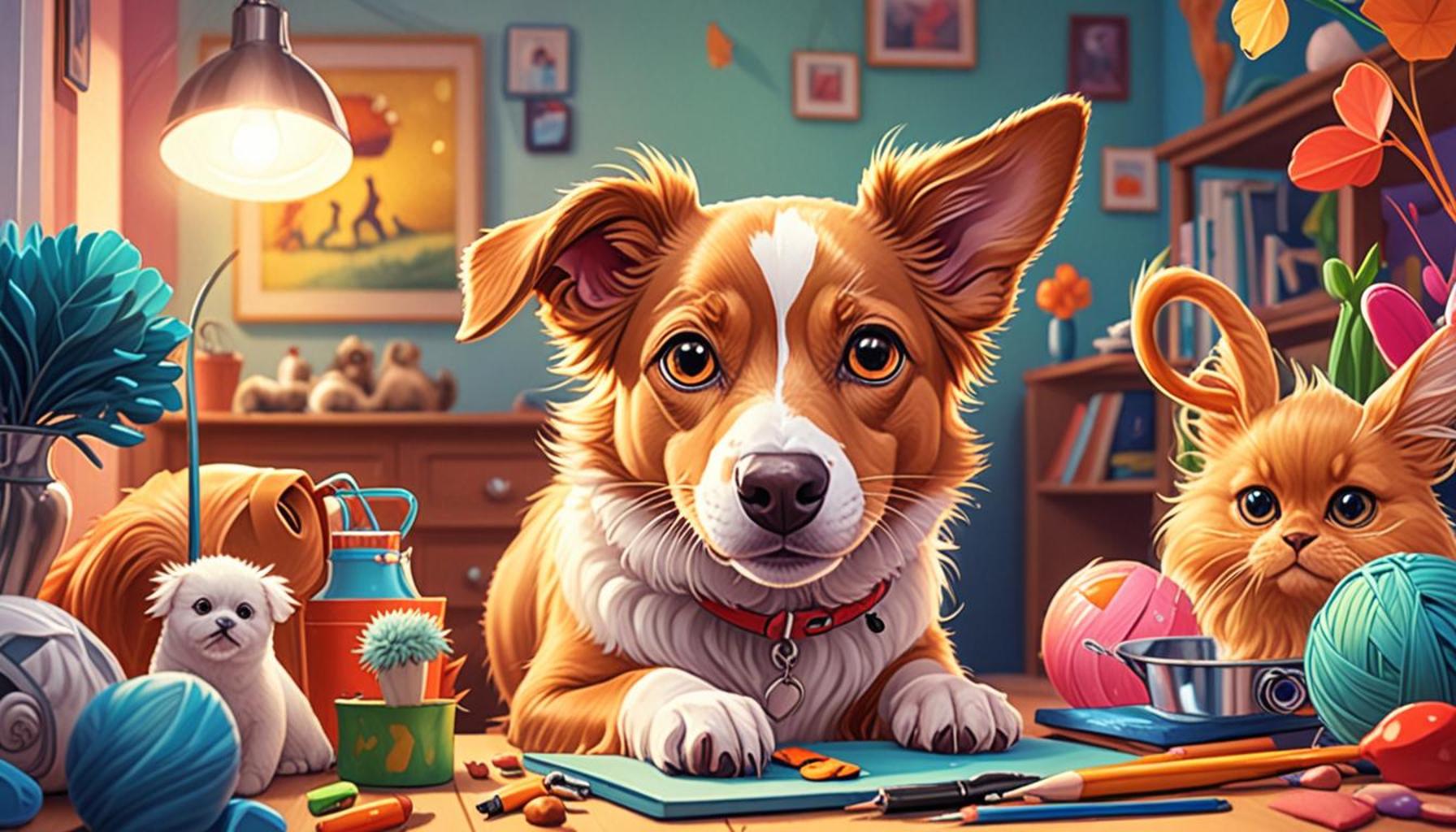Preparing Your Home for a New Pet: Practical Tips

Welcoming a new pet into your family can ignite a world of joy and companionship, but it is important to approach this exciting journey with thoughtful consideration and thorough preparation. The emotional and physical transition for both you and your new companion requires forethought to ensure a smooth integration into your home. Establishing a safe and comfortable environment before the pet’s arrival greatly contributes to their adjustment and long-term happiness.
Why Preparation Matters
Setting up your home for a new pet can significantly impact your household dynamics and your pet’s well-being. Inadequate preparation can lead to unnecessary stress and had repercussions, both for your new furry friend and your family. Here are several key aspects to consider:
- Safety: Taking measures to remove hazardous items such as toxic plants, electrical cords, or small choking hazards will minimize the risk of accidents. For example, if you’re adopting a puppy, consider baby-proofing cabinets or securing any harmful substances out of reach.
- Comfort: Creating a cozy space, often a designated area with bedding, toys, and possibly a scratching post for cats, allows your pet to feel secure and less anxious in their new surroundings. A familiar blanket or an item with your scent can enhance this sense of comfort.
- Resources: Stocking up on essential supplies such as food, water bowls, bedding, toys, and grooming tools will streamline your pet’s transition and show your commitment to their care. Each type of pet may require specific resources; for instance, reptiles will need habitat warmth and humidity levels monitored, while dogs might need a leash and identification tags.
What to Consider Before Bringing Home a Pet
Before welcoming your new companion, it’s crucial to understand their unique needs to tailor your preparations effectively. Reflect on the following considerations:
- Space: Evaluate whether you have sufficient room for your pet. Larger breeds, like Golden Retrievers, may require more space to roam, while smaller animals, such as hamsters or fish, can thrive in smaller environments. An outdoor space may also be necessary for certain pets.
- Supplies: Ensure you have not just basic items, but also any specific necessities like collars, harnesses, and special dietary food. Don’t forget about toys and enrichment tools that cater to your pet’s stimulation needs, promoting a mentally healthy lifestyle.
- Training: Envision how you will approach training; establishing behavioral expectations early can lead to a more well-adjusted pet. Research options such as obedience classes for dogs or methods to litter train cats, as well as creating routines that incorporate time for play and learning.
By diving into these practical tips, you not only make your home a welcoming haven but also lay the groundwork for a nurturing and loving relationship with your new pet. Attention to these details will pave the way for the rewarding journey ahead, transforming the challenges of pet ownership into an enriching experience filled with companionship, loyalty, and love. The next steps will precisely outline each facet of preparation to ensure that you and your new friend enjoy a seamless transition into your shared life.
LEARN MORE: Click here to discover the link between playtime and your pet’s well-being
Creating a Safe Environment
One of the most critical aspects of preparing your home for a new pet is ensuring their safety. Pets, especially younger ones, are naturally curious and might not be aware of potential threats within your home. To secure your living space, consider the following steps:
- Hazard Identification: Walk through your home and identify areas that could be harmful to your new pet. Look for open containers of cleaning supplies, medications, or other toxic substances. Make sure these items are stored in high cabinets or secure drawers.
- Electrical Precautions: Pets often love to chew on cords, which can lead to serious accidents. Use cord protectors or wraps to cover electrical cables, and strategically position furniture to keep cords out of reach.
- Secure Windows and Balconies: Ensure that windows and any outdoor spaces, like balconies, are securely locked or screened. Pets can be prone to accidents if they attempt to jump or fall from heights.
- Remove Small Objects: Small, swallowable items such as coins, buttons, or toys should be kept out of reach. If you’re bringing home a puppy or kitten, consider getting on your hands and knees to see your home from their perspective.
- Pet-Friendly Plants: While many houseplants are harmless, others can be toxic to pets. Research which plants are safe before introducing greenery to your home. Popular unsafe varieties include lilies and azaleas.
Designated Spaces for Comfort
Beyond safety, creating a designated area for your new pet can significantly ease their transition into your home. It’s vital to develop a space that encompasses their needs for relaxation, play, and comfort. Consider these elements:
- Bedding Area: Choose a comfortable bed or mat for your pet where they can retreat when feeling overwhelmed. This should be placed in a quiet, low-traffic area of your home, away from loud noises or disturbances.
- Play Zone: Establish a specific area where your pet can explore, play, and engage with their toys. This can include scratching posts for cats or a designated playpen for small animals. Regular play will not only keep them physically fit but also mentally stimulated.
- Feeding Station: Set up a feeding area that is easily accessible but not in high foot traffic zones. Use non-slip bowls to prevent spills, and consider using a mat to catch any mess from enthusiastic eaters.
- Safe Outdoor Access: If your pet will have access to an outdoor area, ensure it’s enclosed with secure fencing. Evaluate the space for any potential hazards such as harmful plants or sharp objects.
These adjustments not only facilitate your pet’s comfort but foster an environment that emphasizes their well-being. Taking these proactive measures will help you build a secure and loving home for your new family member, paving the way for a harmonious life together. In the following sections, we will delve deeper into essential supplies and the importance of training, ensuring you have a well-rounded foundation for your new pet’s arrival.
Preparing Your Home for a New Pet: Practical Tips
When welcoming a new pet into your home, proper preparation ensures a smooth transition for both you and your furry friend. Here are some practical tips to consider:
Pet-Proofing Your Space
One of the first steps is to pet-proof your home. This means securing loose wires and removing hazardous substances such as cleaning supplies, medications, and other toxic items that could be harmful if ingested by your new pet. Keep fragile items out of reach to prevent accidents. Check your home for small spaces where pets might get stuck or hidden compartments that could be potentially dangerous.
Designating a Safe Area
Establish a designated safe space for your new pet, equipped with everything they need to feel comfortable, such as a bed, food and water bowls, and toys. This area should be quiet and comfortable, allowing your pet to retreat when they feel overwhelmed. Make sure this space is away from heavy foot traffic to help them acclimatize at their own pace.
Gather Necessary Supplies
Before the big day arrives, stock up on necessary supplies. Essential items include food, a litter box or dog crate, scratching posts, and chew toys. Research the specific needs of your pet’s breed to ensure you provide appropriate care. Having these supplies ready will ease the transition for your new companion.
Introducing Family Members
If you have other pets, plan how to introduce them to the newest member of your family. This should be done gradually, allowing both your current pets and new arrivals to adjust to one another’s presence. Create a smooth introduction by keeping initial interactions short and supervised, and rewarding positive behavior with treats.
Setting a Routine
Establishing a routine can greatly benefit your new pet’s behavior and well-being. Consistent feeding times, walks, and play sessions help pets feel secure and understand what to expect. This routine should also include regular visits to the veterinarian for check-ups and vaccinations.Creating a welcoming environment for a new pet involves thoughtfulness and preparation. Each step you take not only contributes to a smoother adjustment period but also enhances the bond you will share with your new furry friend.
DISCOVER MORE: Click here to learn about inspiring success stories
Essential Supplies for Your New Pet
Equipping your home with the right supplies can make a world of difference in your pet’s adjustment period and long-term comfort. Proactively gathering these essentials ensures that you can provide for your new furry friend right from the moment they arrive. Here’s a comprehensive list to consider:
- Food and Water Bowls: Choose durable bowls that are appropriate for your pet’s size. Stainless steel is an excellent option as it’s easy to clean and non-toxic. If you have a puppy or kitten, invest in smaller bowls that can grow with them.
- High-Quality Pet Food: Research and consult your veterinarian about the best food options for your specific type of pet. Different breeds have varied nutritional needs, so look for high-quality brands and consider specialized needs based on age, size, or health conditions.
- Collars and Leashes: For dogs, a sturdy and adjustable collar along with a well-fitted leash is essential for outings. Ensure your collar has an ID tag including your contact information, as this enhances chances of a safe return if your pet escapes.
- Litter Box and Supplies: If you’re bringing home a cat, make sure to have a litter box that is easy for them to access. You might also consider buying a litter mat to minimize mess. Choose a quality litter that controls odor and is comfortable for their paws.
- Toys: Providing various toys can help keep your pet entertained and mentally stimulated. Look for chew toys, interactive playthings, and puzzle toys that encourage problem-solving. Remember to rotate toys to keep their interest piqued.
- Grooming Supplies: Depending on your pet, you may need various grooming tools. Regular brushing not only keeps their coat healthy but also promotes bonding. Be sure to have necessary items such as dog or cat shampoo, brushes, and nail clippers.
- Crate or Carrier: A crate is valuable for training and travel. Ensure the crate is the right size for your pet and is comfortable. If you have a cat, a secure carrier will be essential for trips to the vet or safe transport.
The Importance of Training and Socialization
Another critical aspect of preparing your home for a new pet is understanding the value of training and socialization. These factors play an influential role in your pet’s development and their ability to fit seamlessly into your household. Here’s why these are essential:
- Basic Commands: Teaching your new pet fundamental commands such as “sit,” “stay,” and “come” is vital for their safety and your peace of mind. Positive reinforcement techniques, such as rewards and praise, can be very effective and foster a loving bond.
- House Manners: Training should also entail teaching your pet house manners. This encompasses everything from where to go to the bathroom to avoiding jumping on guests. Proper guidance can prevent potential issues and build good habits early on.
- Socialization Opportunities: Exposing your pet to different environments, people, and other pets can promote confidence and reduce anxiety. Whether it’s enrolling them in dog training classes or arranging playdates, these experiences help create a well-adjusted companion.
- Handling and Grooming: Introduce your pet to regular handling and grooming early on. This can significantly reduce anxiety during vet visits or grooming sessions as they become accustomed to being touched and handled appropriately.
By investing time and resources into essential supplies and training, you’re laying a strong foundation for a loving and thriving relationship with your new pet, equipping them not just for their new home but for a fulfilling life with you. Over time, these preparations will manifest in a more harmonious household, where both pets and owners can feel secure and happy.
DIVE DEEPER: Click here to discover more about your pet’s anxiety
Conclusion
Bringing a new pet into your home is an exciting and fulfilling experience, enriched by the bond that develops between you and your furry companion. However, preparing your home effectively is crucial for ensuring a safe, comfortable, and loving environment. By considering essential supplies, such as food, toys, and grooming tools, you provide your pet with a sense of security from their very first day. Furthermore, investing in training and socialization not only enhances your pet’s well-being but also fosters a harmonious relationship built on trust and understanding.
As you embark on this rewarding journey, it’s important to remain patient and observant of your pet’s unique needs and personality. Every pet is different, and their adjustment period can vary. Stay adaptable and ready to modify your approach as you learn what works best for them. Embrace this opportunity to enrich your life while ensuring your new companion thrives in their new surroundings.
Ultimately, the time and effort you dedicate to preparing your home for a new pet will pay off in countless ways—creating a joyful, meaningful partnership that can last for years to come. So gather your supplies, embrace the training process, and get ready for the exciting moments ahead in your new life together.



